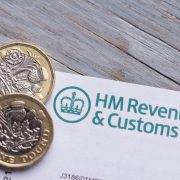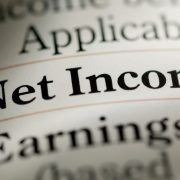Cash flow forecasting is the process of estimating and tracking how much cash flows in and out of a business. It can be tracked over a specific amount of time, offering several benefits.
Cash flow forecasting is vital for any business. However, many companies fail to take advantage of cash flow forecasting to improve their business. Read on to learn more about what a cash flow forecast can offer to better your business’s financial decisions.
Why is Cash Flow Forecasting Important?
Without cash flow forecasting, your business may struggle to determine areas that require financial improvement. By forecasting cash flow, you can make informed decisions and plan for the future more effectively.
Losing money is detrimental to any business – but with cash flow forecasting, you can prevent financial issues from occurring.
The bottom line is that, without cash flow forecasting, you won’t accurately know whether you’ll have enough cash to continue running your business long-term.
Read our guide on business cash flow here to learn more.
The Benefits of Cash Flow Forecasting
From improving cash management to preventing problems within your business, cash flow forecasting offers numerous benefits:
- Predicts cash shortages
- Predicts positive cash flow
- Keeps track of outflow
- Helps plan for potential future scenarios
- Assesses customer’s payment history
- Identifies issues with your suppliers
- Makes it easier to plan investments
- Allows for better cost control
Whether you’re a start-up business or have been operating for some time – all businesses benefit from cash flow forecasting.
What Do Cash Flow Forecasts Contain?
Cash flow forecasts contain important financial information based on a set period:
- The opening balance of the set period
- Income
- Expenses (for example, wages and rent)
- Company receipts
- The closing balance of the set period
Cash flow forecasts are completed either over a short or long period. Depending on whether you forecast the cash flow of your business for a few weeks or over 12 months, you’ll need access to key data and information.
Short-Term vs Long-Term Cash Flow Forecasting
Which is better, short-term or long-term cash flow forecasting? The answer is simple – both. Short-term and long-term cash flow forecasting offers different benefits, allowing for better financial management over a short and long period.
Any business forecasting their cash flow should do so both short and long-term. But why?
| Short-Term Cash Flow Forecasting | Long-Term Cash Flow Forecasting |
|---|---|
| Predicts cash flow for a time period under 12 months | Predicts cash flow for 12 months or more |
| Focuses on more immediate cash requirements | Focuses on future growth and investments |
| Provides real-time insights that help you make quick financial decisions | Provides future insights that help you plan for financial obstacles in the future |
Ultimately, if you want to improve your business’s financial state both currently and in the future, you should create short and long-term cash flow forecasts or work with a trusted accountant to do so on your behalf.
Should You Calculate Your Own Cash Flow?
Calculating your own cash flow is possible, but not always recommended. Although there’s no rule to state that you can’t create your own cash flow forecast, it’s advisable to seek assistance from a professional accountant.
Although some may find the advantages of creating your own cash flow forecasts beneficial, such as the cost-effectiveness, the process will likely come with some challenges.
Dealing with business finances is not only time-consuming and sometimes complex, but it also leaves room for costly errors, which can be extremely damaging.
Before deciding whether to tackle your own cash flow forecasts or seek help from the experts, there are a few factors to consider:
- The size of your business
- How much free time you have
- Confidence using certain software
- Whether you have access to the right tools
- How much you know about handling finances
- The future of your business
Create a Cash Flow Forecast
If you’re determined to create your own cash flow forecast for your business, you’ll need to follow some key steps:
- Decide on which period you wish to plan for – do you want to cover a few weeks or a couple of months?
- List your income – starting with sales and non-income sales (such as any investments, licence fees, or tax refunds)
- Calculate your net income – this can be done using a simple calculation (net income = total revenue – all expenses)
- List your outgoings – this should include the likes of rent, wages, bank loans, advertisements, and tax payments
- Find out the running cash flow of your business – for either each week or month, subtract your net outgoings from your net income
The easiest way to create a cash flow forecast is by using spreadsheets, which allow you to split each stage of the forecast into columns.
Note
Creating your own cash flow forecast for your business isn’t as simple as it seems. You’ll need access to important data to ensure that your cash flow forecast is done correctly. As mentioned, you should seek advice from a trusted accountant instead of creating a cash flow forecast independently.
Work With an Accountant Today
It’s advisable to seek assistance from a trusted professional regarding your business’s finances. Accountants help provide visibility on your financial performance while ensuring you hit your set targets.
At DH Business Support, we have a team of highly experienced accountants who are here to assist you. With us, you can expect:
- Expert knowledge
- Ongoing support and guidance
- Trusted advice
- More free time
Our highly experienced and friendly team of professional chartered accountants provides real-time financial data, which is vital for ensuring accurate cash flow forecasting. As your trusted finance specialists, we will support you in completing the cash flow forecast for your business.
To find out more about our expert services, please don’t hesitate to contact our team today. We look forward to working together in the near future.



